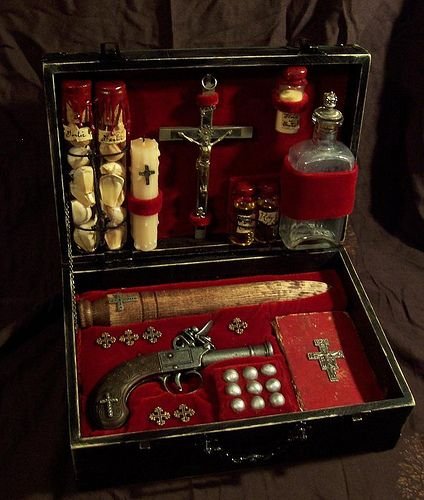
You’ve seen them turn up on auction sites from time to time: “authentic vampire killing kits,” attributed to a master craftsman, Professor Ernst Blomberg of Germany. (One sold for $12,000 at Sotheby’s.) A British museum curator explains how he proved vampire hunting kits to be fakes – and why they’re nonetheless still very valuable.
The vampire hunting kits allegedly sold to 19th century travellers in eastern Europe contain much of what you would expect: a wooden stake, Bible, crucifix, pistol with lead bullets, gunpowder, garlic, and glass vials that held various concoctions to ward off vampires.
One of the most intriguing mysteries of the 19th century involves the manufacturing and selling of vampire hunting kits. Several kits have turned up in recent years, and some have sold for exorbitant amounts of money. The true origin of these kits is shrouded in mystery.
Although it can’t be 100 percent proven, there seems to be historical evidence that vampire hunting kits became popular in western Europe after the release of Bram Stoker’s Dracula in 1897. Superstitious travellers would supposedly purchase these kits in preparation for their perilous travels to Eastern Europe.

More likely intended as souvenirs for rich novelty collectors, these vampire hunters kit would typically include garlic, a bible, stakes, crosses, silver bullets, and glass vials that held various concoctions to ward off vampires.
Interestingly, a few vampire hunting kits have shown up with artefacts that predate Bram Stoker’s Dracula and other written accounts of the, pointing to the strong oral history component of the legacy.
